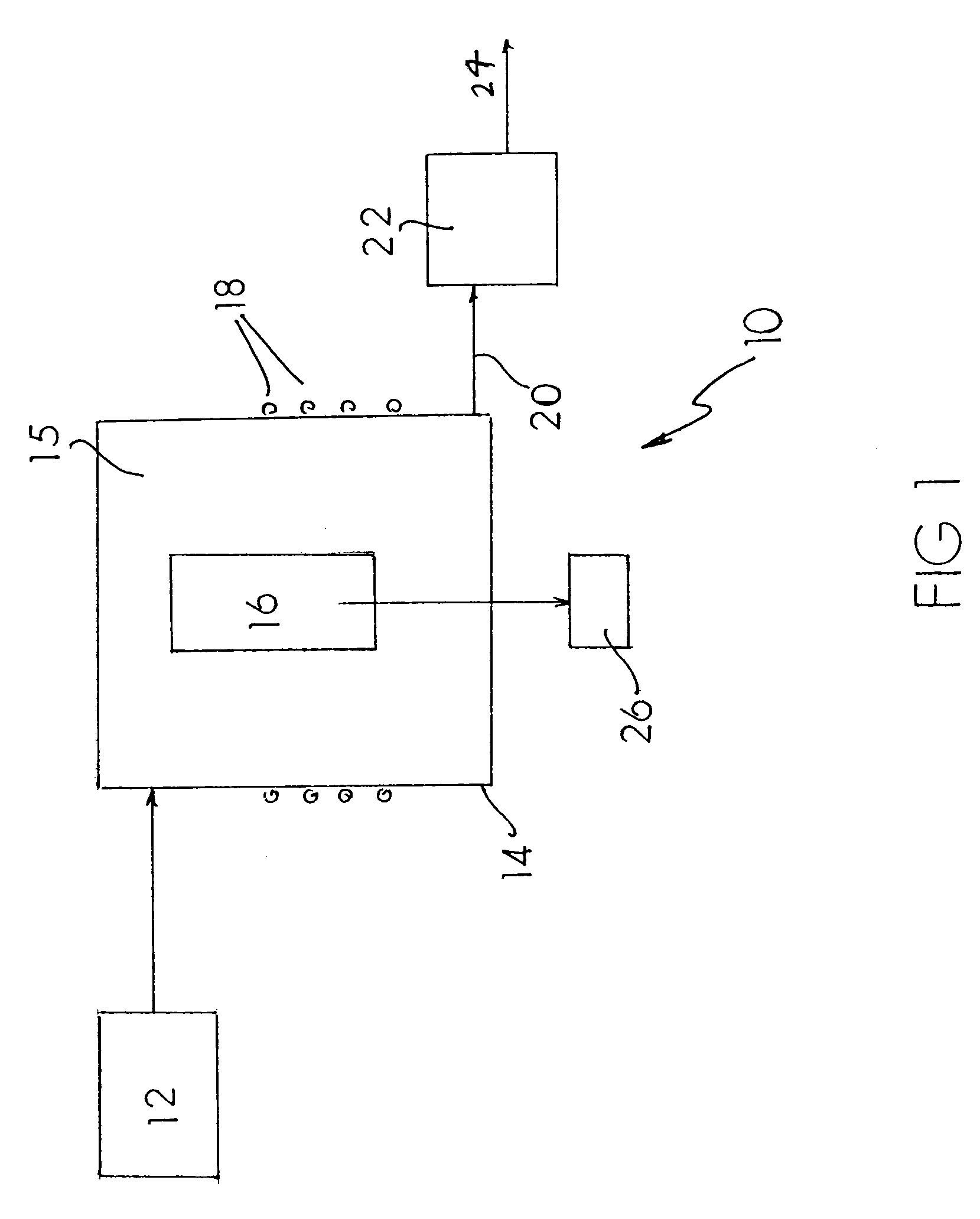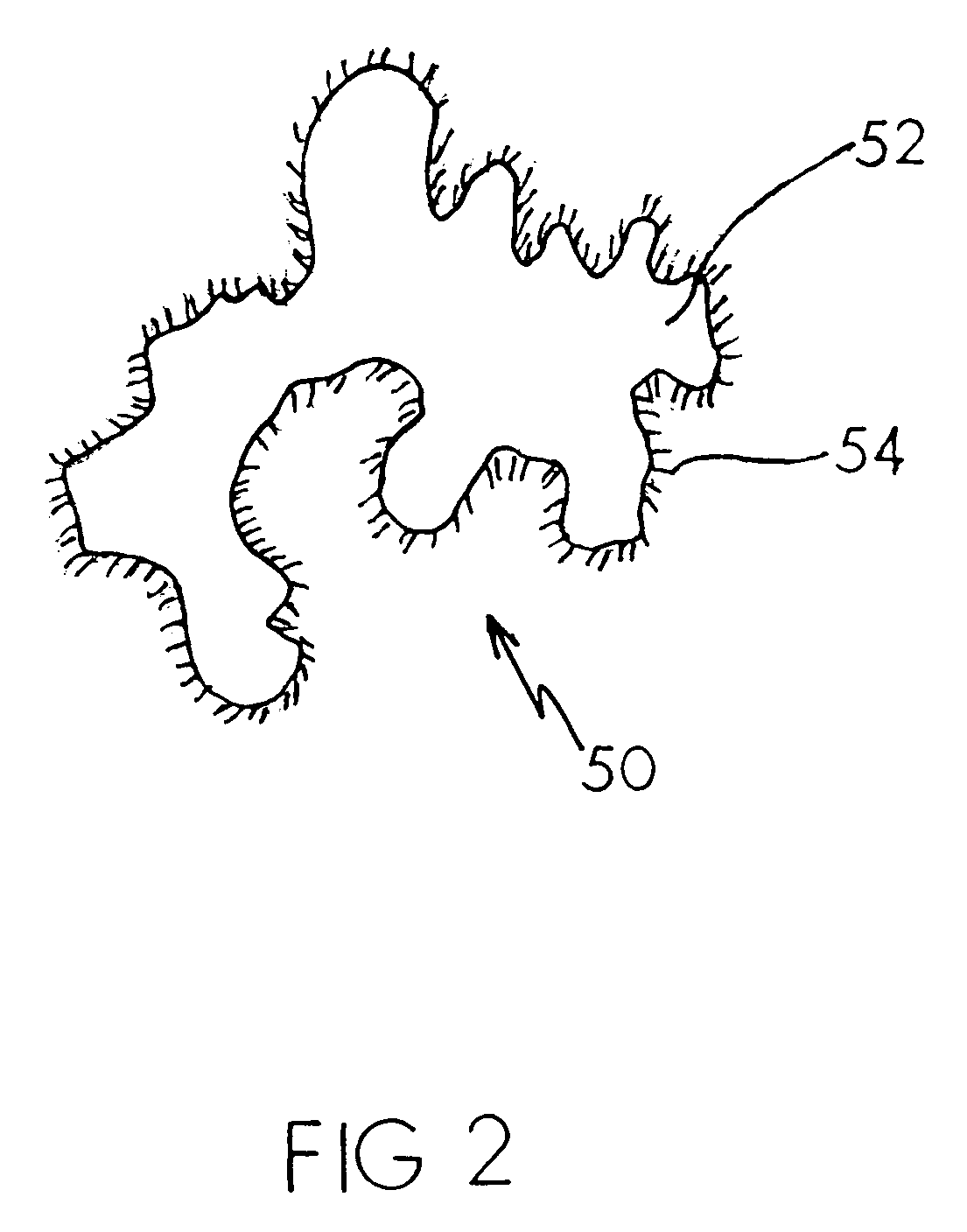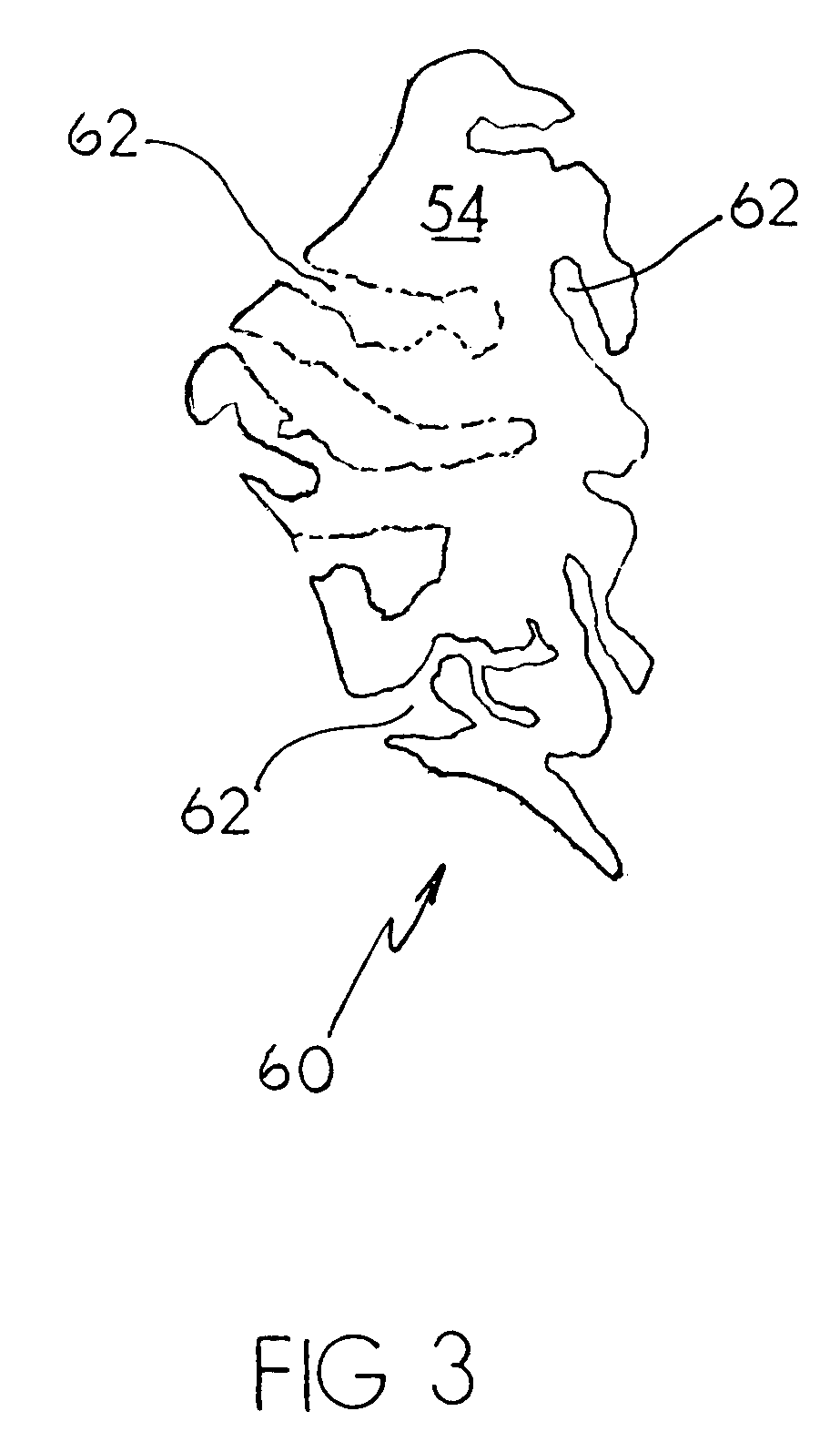Method for high temperature mercury capture from gas streams
a mercury capture and high temperature technology, applied in the field of sorbents, can solve the problems of little progress in removing mercury from high temperature gas streams, mercury added to the environment, and carbon-based sorbents are unsuitable for mercury capture from gas, so as to maintain the thermal efficiency of the gasifier system, increase the temperature, and maintain the effect of thermal efficiency
- Summary
- Abstract
- Description
- Claims
- Application Information
AI Technical Summary
Benefits of technology
Problems solved by technology
Method used
Image
Examples
examples
[0051]Tests were carried out on the metal sorbents in a small-scale laboratory reactor at the NETL in Pittsburgh, Pa. Active metal sorbents such as iridium had a surface area of about 20 m2 / gram in the form of pure iridium. Ten milligrams of iridium sorbent were placed in a reactor. The reactor comprised a ¼ inch outer diameter quartz tube with glass wool supporting the sorbent in a vertical packed-bed configuration.
[0052]The sorbent was exposed to a gas stream comprising 270 ppb elemental mercury (Hg) in nitrogen (N2) carrier gas with flow rate of 60 milliliters per minute (ml / min). This gas composition is to simulate a flue gas. In the alternative, a gas stream was used having the same concentration of mercury, the same flow rate and a composition of 36 mole (mol) % carbon monoxide (CO), 27 mol % hydrogen (H2), the mercury, and the balance nitrogen. This composition is for a simulated fuel gas or syngas. (The 270 ppb mercury concentration is typical of incinerator effluent gases.)...
PUM
| Property | Measurement | Unit |
|---|---|---|
| temperature | aaaaa | aaaaa |
| temperature | aaaaa | aaaaa |
| temperatures | aaaaa | aaaaa |
Abstract
Description
Claims
Application Information
 Login to View More
Login to View More - R&D
- Intellectual Property
- Life Sciences
- Materials
- Tech Scout
- Unparalleled Data Quality
- Higher Quality Content
- 60% Fewer Hallucinations
Browse by: Latest US Patents, China's latest patents, Technical Efficacy Thesaurus, Application Domain, Technology Topic, Popular Technical Reports.
© 2025 PatSnap. All rights reserved.Legal|Privacy policy|Modern Slavery Act Transparency Statement|Sitemap|About US| Contact US: help@patsnap.com



